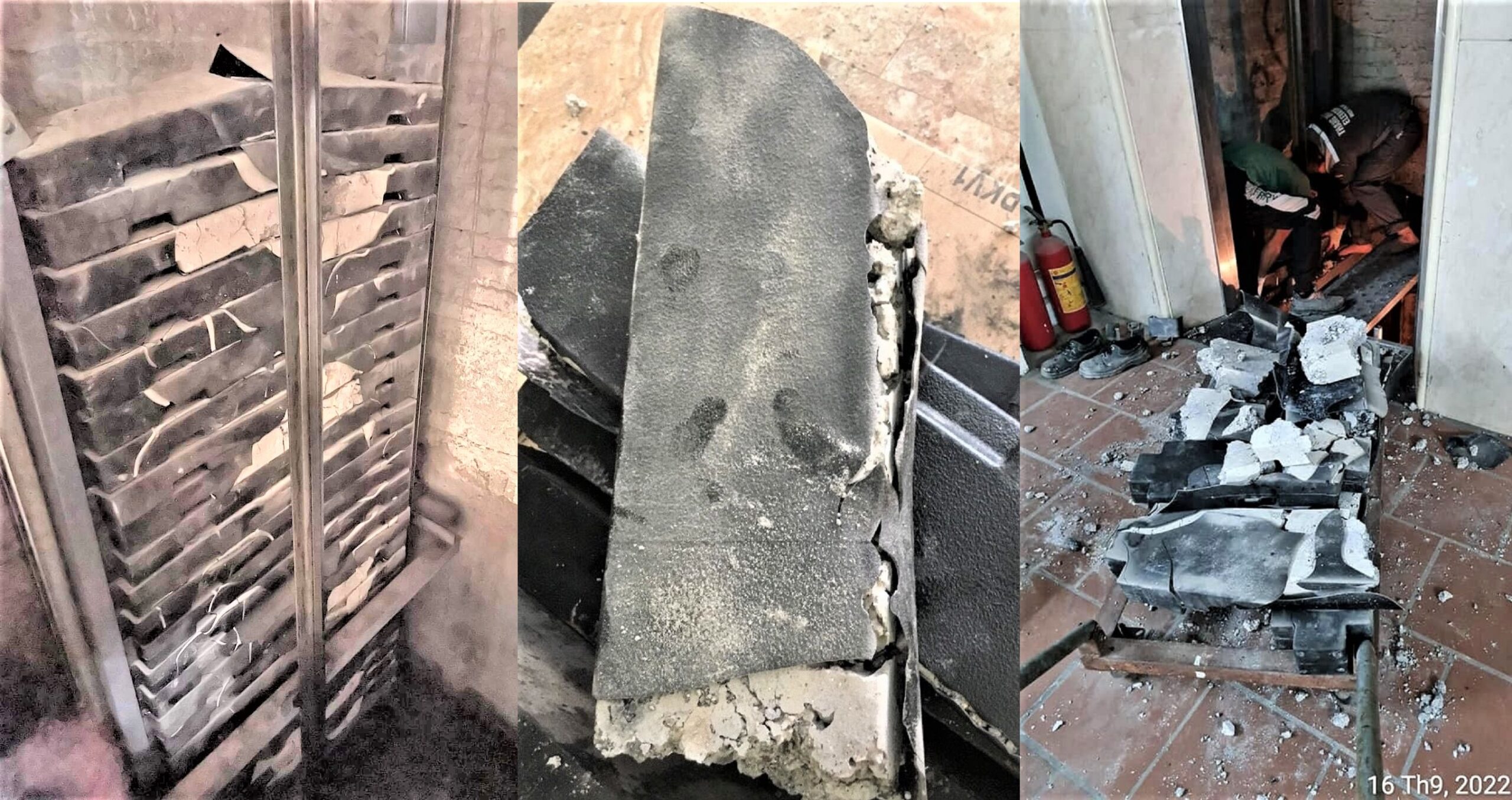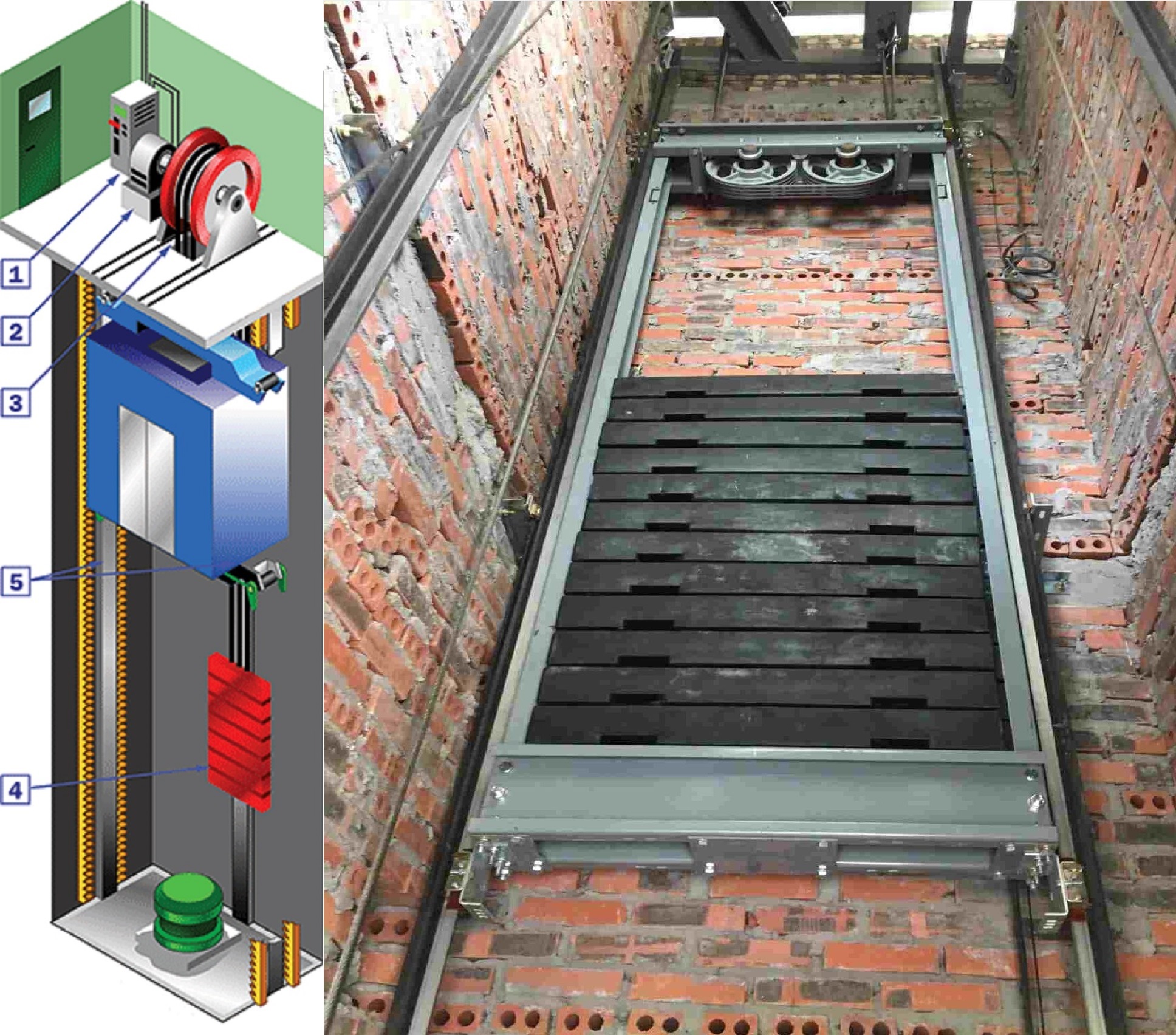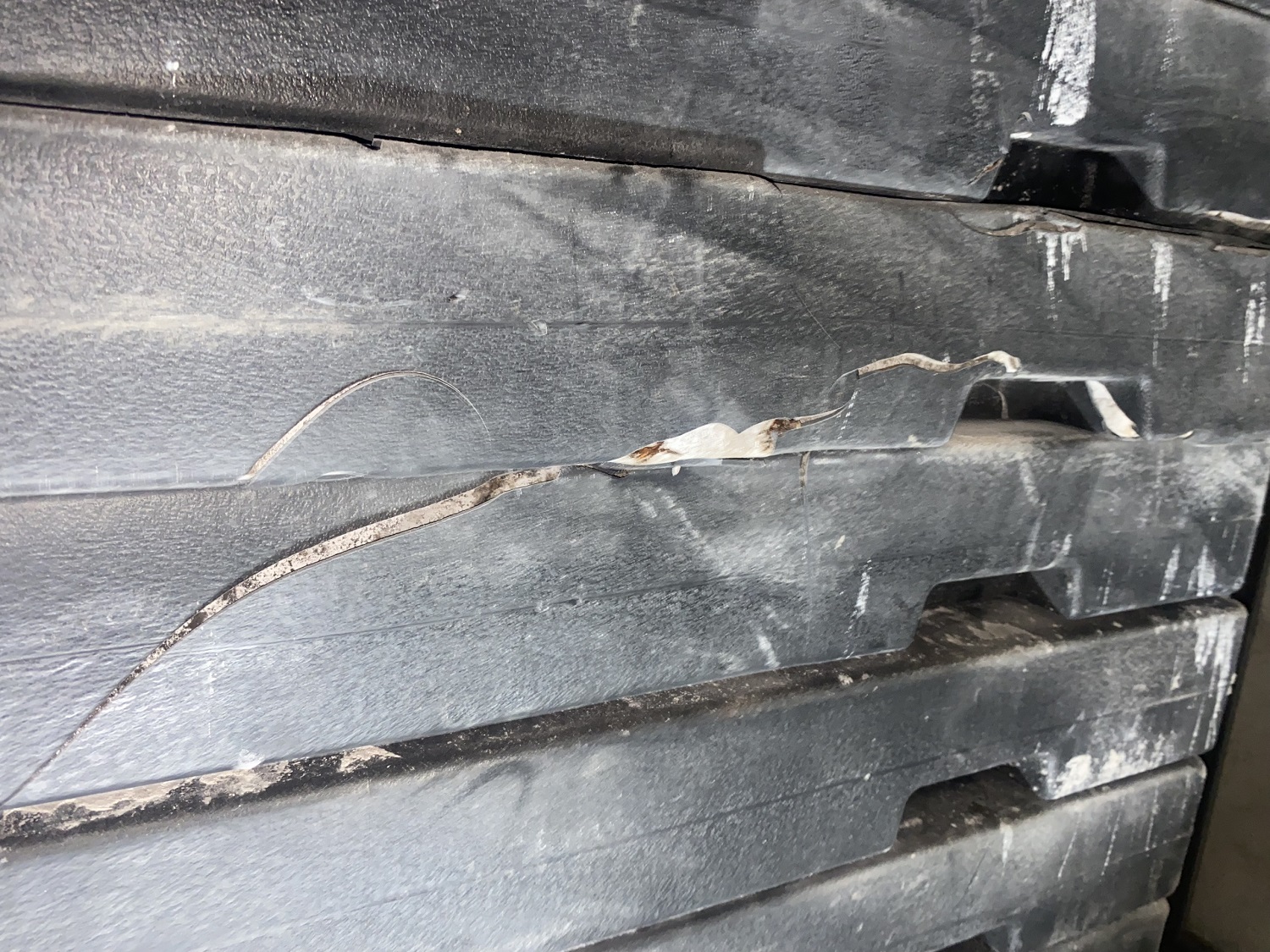EM – The elevator counterweight has a shell made of recycled plastic, inside containing concrete, after a period of use, it has cracked, potentially causing unsafety for the elevator. That is because there are no requirements for materials and manufacturing specifications of the above equipment. This raises the question whether we should review, consider to add technical regulations, improve the safety factor for the elevator or not?
The 10 year promise?
That is the feedback of an elevator user in Hanoi. Accordingly, this person bought an elevator a few years ago. When seeing a counterweight installer with a plastic shell, the owner asked to replace the counterweight with a cast iron or steel shell, and was given a 10-year warranty on the counterweight.
But just a few years later, the counterweight began to crack, break, and fall into the shaft. Calling the elevator supplier, the answer is that it only has a 1-2 years warranty, now it has to be repaired, it costs over 20 million VND if you want to replace the cast iron counterweight!”
Reluctantly, the owner had to reckon to oneself to spend nearly 30 million to replace the entire counterweight.

Pictures of broken concrete counterweights with plastic shells
According to the investigation of Elevator Magazine, there have been many elevators using counterweights with abnormal signs. The counterweight slabs have a thin molded plastic shell, inside is concrete without reinforcement. Over time, the plastic shell will be aging, the counterweight slab is often subjected to force when the elevator starts, stops … will break.
According to some technical experts, a completely broken counterweight can fall into the ceiling of the cabin, causing injury to the stairs when the elevator stops suddenly. Besides, if the number of broken counterweights is large, it may cause an imbalance of gravity between the cabin and the counterweight, then the speed of the cabin may lose control, causing serious safety problems.
There is no specified regulation on counterweight material
QCVN 02:2019/BLDTBXH on Occupational Safety for Elevators was issued in accordance with Circular No. 42/2019/TT-BLDTBXH dated December 30, 2019, effective from July 1, 2021, which also states: “If the counterweight or balancing mass is composed of several weights, measures shall be taken to keep them from shifting, by mounting the weights in a frame and lock them up.”
Often counterweights can be made of cast iron or monolithic steel. But because it only has the effect of keeping weight, now to reduce the cost of products, people use concrete counterweights. Concrete has a density less than 2 times, so the counterweight frame used to contain concrete slabs must be larger than the cast iron and steel counterweight.
The owner of a business specializing in manufacturing counterweights for many years said that although there is no specific regulation on materials for counterweights, it must be based on the safety requirements of the elevator. Normally, counterweights made of concrete with plastic shell cost about 5 million VND/set. As for cast iron, the cost is about 20 million. If made of monolithic steel, the price is about 30 million / set. The partners of this business often ask to produce their own counterweight, which has a steel shell, or cast iron in concrete. However, they have quite strict requirements, specifically about the grade of steel, cast iron and quality of concrete.

Operation diagram and image of counterweight in the shaft
A senior inspector shared, because the standards and regulations do not have regulations on materials as counterweights, when testing only checks and evaluates the operating status of the counterweights according to section 2.3.16 above is “appropriate” or “unsuitable”. This officer also said that, for counterweights with plastic shells and concrete cores, if the plastic is of good quality such as composite, concrete has an expansion in accordance with technical standards, it is also very durable, cannot self-crash.
It is recommended to review, supplement and update regulations on elevator safety
“The counterweight is a durable construction and not a wearable material, the shelf life of the counterweight is allowed by the manufacturers to design until the product is no longer in use. Like the engine, it can wear the pulley, bearings, … but the 7-year-old machine’s case is rotten or broken, cracked, it is unacceptable…”, quoted the business’s reflection to Elevator Magazine.
According to our research, in order to reduce the cost of elevators, many manufacturers assemble cheap equipment and components, which do not guarantee quality, longevity, even of unknown origin… Such a elevator, at the time of installation, can work normally, but there will be problems after a period of use.
Returning to the counterweight, it is likely that the authorities will need to take into account more specific and stricter regulations on manufacturing materials specifications

There should be specific and stricter regulations on the specifications of counterweight materials
Or more broadly, there are elevator safety standards and regulations that over time have become inappropriate and need to be supplemented with additional conditions. We are forced to seriously consider this issue when there have been many accidents related to elevators in the past time.
In fact, we cannot wait for this from state management agencies, but businesses themselves must actively recommend, build and contribute ideas through professional associations. From there, forming a strong and powerful voice, advising on the development of appropriate management policies, promoting the elevator and escalator industry to develop sustainably.



